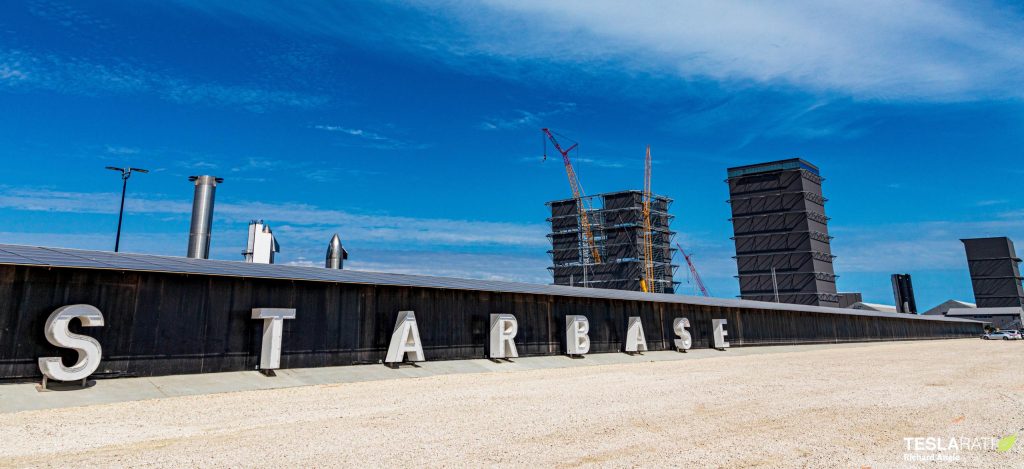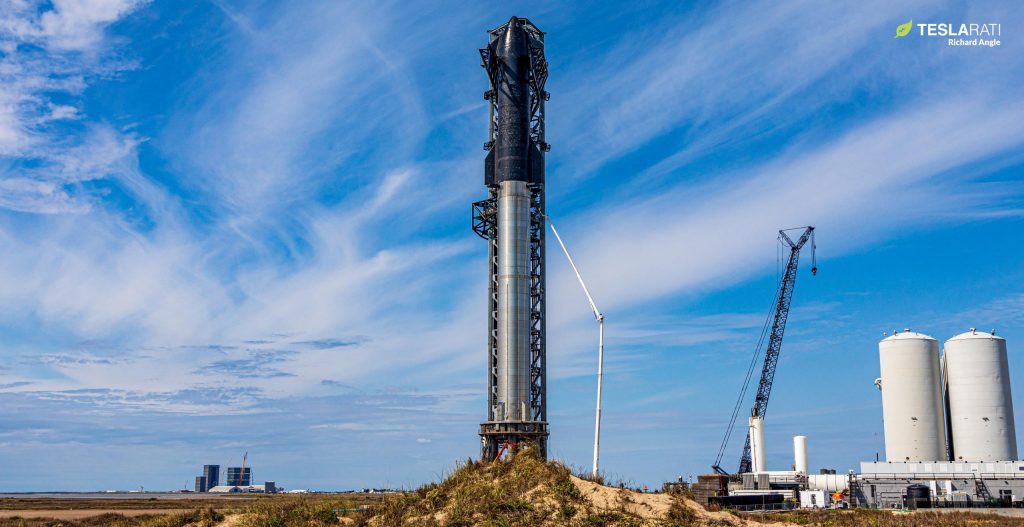

News
SpaceX CEO Elon Musk to present first Starship update since 2019 [webcast]
Barring surprises, SpaceX CEO Elon Musk remains on track to present the first major update on Starship’s development since September 2019 – almost two and a half years ago.
While it’s no longer clear that SpaceX will be able to stack Starship on top of Super Heavy in time for the fully-stacked rocket to serve as an imposing backdrop for the media event, Musk seemingly remains on track to update the world on the status of Starship development as early as 8pm CT (6pm PT, 9pm ET) on Thursday, February 10th (02:00 UTC 11 Feb). Assuming the event is similar to the SpaceX CEO’s first four major Starship presentations, it will be broadcast live to the world on the company’s YouTube channel.
Musk first revealed SpaceX’s detailed plans for a massive, fully-reusable Mars rocket in September 2016. At that point, the rocket – known as the Interplanetary Transport System (ITS) – was to be 12 meters (39 ft) in diameter, 122 meters (400 ft) tall, and made almost entirely out of carbon-fiber composites. In theory, it would have been able to launch up to 300 tons (660,000 lb) to low Earth orbit (LEO) – twice the payload of Saturn V, the next most capable rocket.
In 2017, SpaceX slightly pared back its ambition with a vehicle known as BFR, measuring 9m wide and 106m tall with about a third fewer Raptor engines and estimated performance of ~130 tons (285,000 lb) to LEO. In 2018, on top of announcing Japanese billionaire Yusaku Maezawa’s circumlunar DearMoon mission and BFR’s first real launch contract, SpaceX updated BFR’s design, stretching the booster 12 meters for a total height of 118m (390 ft) and hedging its performance figures with an estimate of 100 tons to LEO in a fully-reusable configuration.
Around the same time as Musk’s 2018 BFR presentation, though, the SpaceX CEO made the decision to entirely scrap the rocket’s composites-heavy design, renaming the rocket ‘Starship’ and replacing the material with stainless steel – effectively reverting structures development to the drawing board. The principles of the rocket, its general shape and layout, and the Raptor engine powering it remained the same. Thanks to steel’s extreme affordability relative to cutting-edge composites, SpaceX was able to make rapid progress and ultimately flew Starhopper – a steel water-tower-esque rocket powered by Raptor – less than a year later in July and August 2019.
Less than a year after Starhopper’s 150m (~500 ft) hop, SpaceX successfully hopped a far more mature Starship prototype known as SN5, which relied on far thinner steel and effectively amounted to a full prototype of the tank section of an orbital-class ship. Just a month later, in September 2020, SpaceX repeated the feat with an entirely different Starship prototype, demonstrating repeatability both in production and flight. Three months later, Starship SN8 – featuring flaps, a nosecone, header tanks, and two more Raptor engines – nearly aced its launch debut. In May 2021, after three more failed test flights, Starship SN15 stuck the landing and survived a 10 km launch, more or less fully demonstrating the rocket’s exotic skydiver-style descent and last-second flip for a vertical landing.
Visible progress has slowed and flight testing has halted since SpaceX began pushing for the first orbital Starship test flight in mid-2021. The company decided against reusing Starship SN15 and also chose not to attempt to replicate the ship’s successful landing with Starship SN16, which was ready for testing a matter of days after. Instead, SpaceX has focused on constructing the orbital launch site and slowly finished Starship S20 and Super Heavy B4 – a pair once expected to support the first orbital test flight. While slow compared to all previous Starship prototypes, Ship 20 has nonetheless made excellent progress and is effectively fully ready for a serious flight test. Booster 4, on the other hand, has barely completed cryogenic proof testing and has yet to perform even a partial wet dress rehearsal (with live propellant) or attempt a single static fire test in last five months.
In short, the status of Starship development – and, especially, Booster 4, Ship 20, and the first orbital test flight – has gotten quite a bit murkier over the last several months. February 9th and 10th marked a welcome change of pace, with SpaceX sailing through the very first attempt at stacking Starship hardware with Starbase’s ‘orbital integration tower’ (launch tower) and a trio of giant, robotic arms. Just a handful of hours after the first ‘arm lift’ began, Starship S20 was safely stacked atop Super Heavy Booster 4, assembling the largest rocket in the world for the second time this year.
With any luck, SpaceX CEO Elon Musk’s first presentation in two and a half years – scheduled no earlier than 8pm CST (02:00 UTC) – will shed further light on the company’s progress towards orbital test flights.



News
Tesla (TSLA) receives “Buy” rating and $551 PT from Canaccord Genuity
He also maintained a “Buy” rating for TSLA stock over the company’s improving long-term outlook, which is driven by autonomy and robotics.

Canaccord Genuity analyst George Gianarikas raised his Tesla (NASDAQ:TSLA) price target from $482 to $551. He also maintained a “Buy” rating for TSLA stock over the company’s improving long-term outlook, which is driven by autonomy and robotics.
The analyst’s updated note
Gianarikas lowered his 4Q25 delivery estimates but pointed to several positive factors in the Tesla story. He noted that EV adoption in emerging markets is gaining pace, and progress in FSD and the Robotaxi rollout in 2026 represent major upside drivers. Further progress in the Optimus program next year could also add more momentum for the electric vehicle maker.
“Overall, yes, 4Q25 delivery expectations are being revised lower. However, the reset in the US EV market is laying the groundwork for a more durable and attractive long-term demand environment.
“At the same time, EV penetration in emerging markets is accelerating, reinforcing Tesla’s potential multi‑year growth runway beyond the US. Global progress in FSD and the anticipated rollout of a larger robotaxi fleet in 2026 are increasingly important components of the Tesla equity story and could provide sentiment tailwinds,” the analyst wrote.
Tesla’s busy 2026
The upcoming year would be a busy one for Tesla, considering the company’s plans and targets. The autonomous two-seat Cybercab has been confirmed to start production sometime in Q2 2026, as per Elon Musk during the 2025 Annual Shareholder Meeting.
Apart from this, Tesla is also expected to unveil the next-generation Roadster on April 1, 2026. Tesla is also expected to start high-volume production of the Tesla Semi in Nevada next year.
Apart from vehicle launches, Tesla has expressed its intentions to significantly ramp the rollout of FSD to several regions worldwide, such as Europe. Plans are also underway to launch more Robotaxi networks in several more key areas across the United States.
News
Waymo sues Santa Monica over order to halt overnight charging sessions
In its complaint, Waymo argued that its self-driving cars’ operations do not constitute a public nuisance, and compliance with the city’s order would cause the company irreparable harm.

Waymo has filed a lawsuit against the City of Santa Monica in Los Angeles County Superior Court, seeking to block an order that requires the company to cease overnight charging at two facilities.
In its complaint, Waymo argued that its self-driving cars’ operations do not constitute a public nuisance, and compliance with the city’s order would cause the company irreparable harm.
Nuisance claims
As noted in a report from the Los Angeles Times, Waymo’s two charging sites at Euclid Street and Broadway have operated for about a year, supporting the company’s growing fleet with round-the-clock activity. Unfortunately, this has also resulted in residents in the area reportedly being unable to sleep due to incessant beeping from self-driving taxis that are moving in and out of the charging stations around the clock.
Frustrated residents have protested against the Waymos by blocking the vehicles’ paths, placing cones, and “stacking” cars to create backups. This has also resulted in multiple calls to the police.
Last month, the city issued an order to Waymo and its charging partner, Voltera, to cease overnight operations at the charging locations, stating that the self-driving vehicles’ activities at night were a public nuisance. A December 15 meeting yielded no agreement on mitigations like software rerouting. Waymo proposed changes, but the city reportedly insisted that nothing would satisfy the irate residents.
“We are disappointed that the City has chosen an adversarial path over a collaborative one. The City’s position has been to insist that no actions taken or proposed by Waymo would satisfy the complaining neighbors and therefore must be deemed insufficient,” a Waymo spokesperson stated.
Waymo pushes back
In its legal complaint, Waymo stated that its “activities at the Broadway Facilities do not constitute a public nuisance.” The company also noted that it “faces imminent and irreparable harm to its operations, employees, and customers” from the city’s order. The suit also stated that the city was fully aware that the Voltera charging sites would be operating around the clock to support Waymo’s self-driving taxis.
The company highlighted over one million trips in Santa Monica since launch, with more than 50,000 rides starting or ending there in November alone. Waymo also criticized the city for adopting a contentious strategy against businesses.
“The City of Santa Monica’s recent actions are inconsistent with its stated goal of attracting investment. At a time when the City faces a serious fiscal crisis, officials are choosing to obstruct properly permitted investment rather than fostering a ‘ready for business’ environment,” Waymo stated.
News
Tesla FSD v14.2.2 is getting rave reviews from drivers
So far, early testers have reported buttery-smooth drives with confident performance, even at night or on twisty roads.

Tesla Full Self-Driving (Supervised) v14.2.2 is receiving positive reviews from owners, with several drivers praising the build’s lack of hesitation during lane changes and its smoother decision-making, among others.
The update, which started rolling out on Monday, also adds features like dynamic arrival pin adjustment. So far, early testers have reported buttery-smooth drives with confident performance, even at night or on twisty roads.
Owners highlight major improvements
Longtime Tesla owner and FSD user @BLKMDL3 shared a detailed 10-hour impression of FSD v14.2.2, noting that the system exhibited “zero lane change hesitation” and “extremely refined” lane choices. He praised Mad Max mode’s performance, stellar parking in locations including ticket dispensers, and impressive canyon runs even in dark conditions.
Fellow FSD user Dan Burkland reported an hour of FSD v14.2.2’s nighttime driving with “zero hesitations” and “buttery smooth” confidence reminiscent of Robotaxi rides in areas such as Austin, Texas. Veteran FSD user Whole Mars Catalog also demonstrated voice navigation via Grok, while Tesla owner Devin Olsen completed a nearly two-hour drive with FSD v14.2.2 in heavy traffic and rain with strong performance.
Closer to unsupervised
FSD has been receiving rave reviews, even from Tesla’s competitors. Xpeng CEO He Xiaopeng, for one, offered fresh praise for FSD v14.2 after visiting Silicon Valley. Following extended test drives of Tesla vehicles running the latest FSD software, He stated that the system has made major strides, reinforcing his view that Tesla’s approach to autonomy is indeed the proper path towards autonomy.
According to He, Tesla’s FSD has evolved from a smooth Level 2 advanced driver assistance system into what he described as a “near-Level 4” experience in terms of capabilities. While acknowledging that areas of improvement are still present, the Xpeng CEO stated that FSD’s current iteration significantly surpasses last year’s capabilities. He also reiterated his belief that Tesla’s strategy of using the same autonomous software and hardware architecture across private vehicles and robotaxis is the right long-term approach, as it would allow users to bypass intermediate autonomy stages and move closer to Level 4 functionality.








